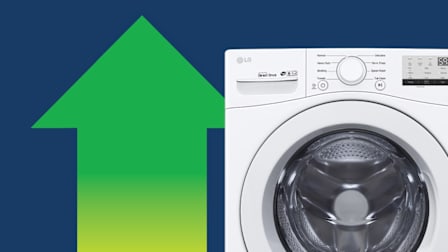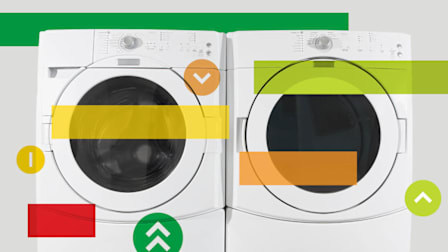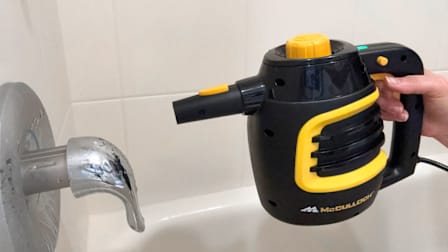What to Do If You Buy a Dud Appliance
When a new fridge or dishwasher isn't working right, should you get it repaired or ask for a refund? Plus: How to get customer service to actually help.

The knocking began quietly at first, deep inside Delane Fisher’s new refrigerator. After a month of it getting louder, she realized that the return period at Home Depot, where she bought the fridge in late 2023, had come and gone. So she called the manufacturer, which sent out a repair technician. Two hours after he left, the knocking returned. Five months and multiple repair visits later, Fisher’s bad-news fridge was still on the fritz, freezing food in the refrigerated section as well as making noise. She asked for a replacement. No dice.
One more round with the manufacturer’s repair service did make Fisher’s refrigerator usable—for now at least. But exhausted by the merry-go-round of repairs and run-around with customer service, Fisher, who lives in Nashville, Tenn., begrudgingly bought an extended warranty for $11.79 per month, hoping it would protect her if future malfunctions occurred.
Her frustration level? Through the roof. “It’s just a shame to pay so much for appliances that are made so cheaply and don’t last,” she says.
So You Brought Home a Lemon
When a new appliance acts up (or doesn’t work at all), take these steps.
Keep a Paper Trail
As soon as you suspect there’s a problem with a product, start documenting it. Snap a photo of your new microwave’s melted plug, for example, or of that dishwasher tub filled with dirty water that won’t drain. Or take a video, with sound, of your washing machine or dryer making scary noises. Then keep a written record of everyone you contacted, when, and what they agreed to do to remedy the situation.
And “once you let them start making repairs, you’ve basically paid full price for a reconditioned appliance,” says Edgar Dworsky, founder of Consumer World, a consumer education website.
Even if you’ve missed the retailer’s official return window, it’s worth starting with the store, says Amy Schmitz, a consumer law expert and professor at the Ohio State University Moritz College of Law in Columbus. Retailers might help “because they want to build goodwill and they care about their reputation,” she says.
Act Fast
You can usually return a product to the store or website where you bought it within 15 to 30 days after you receive it.
If you purchased the item on Amazon, for instance, you can usually send it back for a full refund within 30 days of buying it.
But some retailers require notification within 48 hours of delivery. That’s the policy at Lowe’s, for example, for major appliances like refrigerators and washing machines.
So check the return policy. It will usually be listed right on the receipt, whether paper or digital.
Start With the Retailer, Not the Manufacturer
That’s because the store where you bought the item is more likely to give you a refund or a replacement, sometimes with few, if any, questions asked, “while the manufacturer is more likely to offer a repair under the written warranty,” Dworsky says.
Know What the Warranty Covers
Track down the product’s warranty in your records or, if you don’t have it, from the company’s website. (Don’t worry if you didn’t return the card; it’s mostly for recalls and marketing.)
The warranty may say that you must let the manufacturer try to fix the appliance before you qualify for a replacement or refund, but Schmitz says you can try to bypass the repair process. And the better you’ve documented your case, the more likely the manufacturer will let you skip a repair and just replace it.
Also check the warranty for other details. What parts are covered and for how long? Can the warranty be invalidated if you let a local person fix the item instead of someone from the retailer or manufacturer? Knowing what your warranty covers will make you better prepared when making your case.
If your appliance’s problem starts after the product’s official warranty expires, don’t lose hope. Most states require manufacturers to honor so-called implied warranties, which means that products should be expected to function for a reasonable period of time regardless of the manufacturer’s warranty. So cite this when you contact the manufacturer.
Another option: If you paid by credit card, see whether the card issuer offers extended warranty coverage on appliances. Some American Express and Chase cards do.
Where to Buy Appliances
See CR’s exclusive reviews of the best online and in-store retailers to shop for large appliances.
Try to Reach a Real Person at Customer Service
You’re more likely to get a satisfactory solution—whether from a retailer or manufacturer—by communicating directly with a real person instead of emailing back and forth with someone or, even worse, engaging with an automated chatbot. If you purchased the item from a local store, going there to make your case may be your best bet for a resolution.
Calling is another good option. But sometimes just finding the phone number for a retailer or manufacturer can be tricky. If you can’t find the toll-free number on the website or your receipt, search a database maintained by Elliott Advocacy, a nonprofit consumer organization, for contact information for executives responsible for customer service at some major companies, including appliance manufacturers. The website is at elliott.org/company-contacts.
Wait times when calling customer service tend to be shorter on weekday mornings—especially Wednesdays and Thursdays—according to Talkdesk, a company that helps manage customer support for businesses.
If the problem occurs over the weekend or at night, when customer service may be closed, track down an email address for it and ask for a call back ASAP. That will help get you on its radar—and add to your paper trail. During your conversation, try to get the representative’s name and ask for email confirmation of what was said and whatever solution you reached.
Also, no matter how upset you are, dial down the rage. If you’re not getting anywhere, calmly ask to speak with a supervisor, store manager, or senior marketing manager.
If You Hit a Dead End
Here are some options to try if you can’t get satisfaction from either the retailer or manufacturer:
- Dispute the charge with your credit card company. The card issuer can remove the charge while it investigates. You usually have 60 days after a purchase to initiate a claim. Provide all of your documentation of the problem and attempts to solve it.
- Complain on social media. Post your complaint on the Facebook page of the retailer or brand, or use its handle on Instagram or X. Politely state your problem and request help. And post something on the company’s website. Companies do look at what’s there, and the last thing they want is negative reviews online, says Schmitz at Ohio State University.
- Get help. Contact the Better Business Bureau or your state attorney general’s office to escalate a complaint with a retailer or manufacturer. (Find the consumer protection office in your state.)
- Enlist a consumer reporter at a local newspaper or TV news station. Do an online search for those in your area. One might cover your situation and get results.
- Head to small-claims court. It can resolve cases (sometimes up to $25,000) and you typically don’t need a lawyer to file.

Illustration: Federico Gastaldi Illustration: Federico Gastaldi
3 Appliance Problems and How to Handle Them
Problem: Your 14-month-old fridge isn’t keeping food cold and your one-year manufacturer’s warranty no longer covers it.
Solution: Bring up the implied warranty. The Uniform Commercial Code, which is recognized in most states, offers protection to some degree. It states that a purchase should function as expected for a reasonable length of time. Even after the product’s original warranty expires (or if it didn’t come with one), you have rights to a remedy under the UCC. If you need more guidance on this, contact the Better Business Bureau or your state’s Department of Consumer Affairs.
Problem: Your new espresso maker stopped working, no one answers the company’s phone, and no email address is listed.
Solution: Try Elliott Advocacy or GetHuman, searching by the company’s name. Then look for “customer care,” “customer relations,” “manager,” or “director.” Last ditch: Post a complaint on the brand’s social media and say you need a response within a week or two or you’ll escalate the issue to your state’s attorney general or another agency.
Problem: You requested a credit card chargeback for your faulty new dishwasher six weeks ago but worry that it won’t go through.
Solution: You can file for a chargeback only if you first tried to resolve the problem with the seller. To make your case, find your receipt, the return policy, the warranty, and records of when and how you alerted the seller and manufacturer about the problem, including visual proof. Then contact the credit card issuer to find out how to share that info. It must acknowledge your request within 30 days and resolve the problem within 90.
Editor’s Note: This article also appeared in the January/February 2025 issue of Consumer Reports magazine.




















